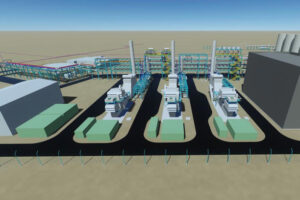Solar Impulse: Zero-fuel plane begins final flight
The zero-fuel aeroplane, Solar Impulse, has left the Egyptian capital, Cairo, on the last leg of its global tour.
The aircraft should take about 48 hours to reach Abu Dhabi, UEA – the place it began the circumnavigation in March 2015.
Pilot Bertrand Piccard is at the controls one final time.
His flight ought to be fairly straightforward, although his team has some concerns about how the heat in the Middle East may affect the plane.
Mr Piccard is likely to have to spend a lot of time at high altitude on oxygen to get above the thermals and the turbulence they induce.
The warmer, thinner air above the Saudi desert also means Solar Impulse’s motors will have to work harder to propel the vehicle forward.
This will require careful management of the energy reserves in the plane’s lithium polymer batteries, to be sure they can sustain the aircraft through the night hours.
‘We thought it was going to be an easy flight because it’s always good weather between Egypt and Abu Dhabi across Saudi. But actually, it’s extremely difficult to find a good strategy,’ Mr Piccard told BBC News.
Solar Impulse has covered some 30,000km in its quest to become the first plane to circle the world using no fuel, just the energy from the Sun.
The Cairo-Abu Dhabi flight marks the 17th and final segment in the journey, which has included crossings of the Pacific and Atlantic oceans.
Mr Piccard has alternated pilot duties with his friend and business partner Andre Borschberg.
The pair had hoped to complete the challenge last year but progress was not quite swift enough to get the best of the weather in the Northern Hemisphere’s summer.
And when battery damage was sustained on an epic five-day, five-night passage over the western Pacific in June/July 2015, the decision was taken to ground the effort for 10 months.
For Mr Piccard, landing back in Abu Dhabi will represent the closure of a 17-year undertaking to prove that a solar plane could circumnavigate the globe.
The idea was born when he made the first, non-stop, round-the-world flight in a balloon in 1999.
His Breitling Orbiter 3 envelope only just made it, landing in the Egyptian desert with virtually no reserves left of the propane gas it had been using in burners to stay aloft.
Mr Piccard said he vowed then that “there had to be another way”.
He acknowledges that airliners are not about to swap their jet engines for photovoltaic cells, but argues solar will play a role in the future of aviation.
‘I make the bet that in 10 years we will have electric aeroplanes flying with 50 passengers for short- to medium-haul flights,’ he said.
‘You can fly with no pollution and no noise – purely electric – and landing in urban airports, making no disturbance for the neighbours.
‘So, it will be a market for aviation and transport. And maybe sometimes people will say this all started with a crazy idea of flying around the world in a solar aeroplane, and the outcome was useful for everyone.’
Mr Piccard and Mr Borschberg have been working on the Solar Impulse project for more than a decade.
Their plane is wider than a 747 jumbo jet but weighs just 2.3 tonnes, which poses some unique challenges:
- The aircraft is very sensitive to the weather conditions
- But its solar cell and battery efficiency is very high
- This means it can stay aloft for many days and nights
- The pilot is permitted only catnaps of up to 20 minutes
- The cockpit is little bigger than a public telephone box
LEG 1: 9 March. Abu Dhabi (UAE) to Muscat (Oman) – 772km; 13 Hours 1 Minute
LEG 2: 10 March. Muscat (Oman) to Ahmedabad (India) – 1,593km; 15 Hours 20 Minutes
LEG 3: 18 March. Ahmedabad (India) to Varanasi (India) – 1,170km; 13 Hours 15 Minutes
LEG 4: 18 March. Varanasi (India) to Mandalay (Myanmar) – 1,536km; 13 Hours 29 Minutes
LEG 5: 29 March. Mandalay (Myanmar) to Chongqing (China) – 1,636km; 20 Hours 29 Minutes
LEG 6: 21 April. Chongqing (China) to Nanjing (China) – 1,384km; 17 Hours 22 Minutes
LEG 7: 30 May. Nanjing (China) to Nagoya (Japan) – 2,942km; 1 Day 20 Hours 9 Minutes
LEG 8: 28 June. Nagoya (Japan) to Kalaeloa, Hawaii (US) – 8,924km; 4 Days 21 Hours 52 Minutes
LEG 9: 21 April. Kalaeloa, Hawaii (US) to Mountain View, California (US) – 4,523km; 2 Days 17 Hours 29 Minutes
LEG 10: 2 May. Mountain View, California (US) to Phoenix, Arizona (US) – 1,199km; 15 Hours 52 Minutes
LEG 11: 12 May. Phoenix, Arizona (US) to Tulsa, Oklahoma (US) – 1,570 km; 18 Hours 10 Minutes
LEG 12: 21 May. Tulsa, Oklahoma (US) to Dayton, Ohio (US) – 1,113 km; 16 Hours 34 Minutes
LEG 13: 25 May. Dayton, Ohio (US) to Lehigh Valley, Pennsylvania (US) – 1,044 km; 16 Hours 47 Minutes
LEG 14: 11 June. Lehigh Valley, Pennsylvania (US) to New York (US) – 230km; 4 Hours 41 Minutes
LEG 15: 20 June. New York (US) to Seville (Spain) – 6,765km; 71 hours 8 minutes
LEG 16: 11 July. Seville (Spain) to Egypt (Cairo) – 3,745km; 48 Hours 50 Minutes
LEG 17: 23 July. Egypt (Cairo) to Abu Dhabi (UAE)















